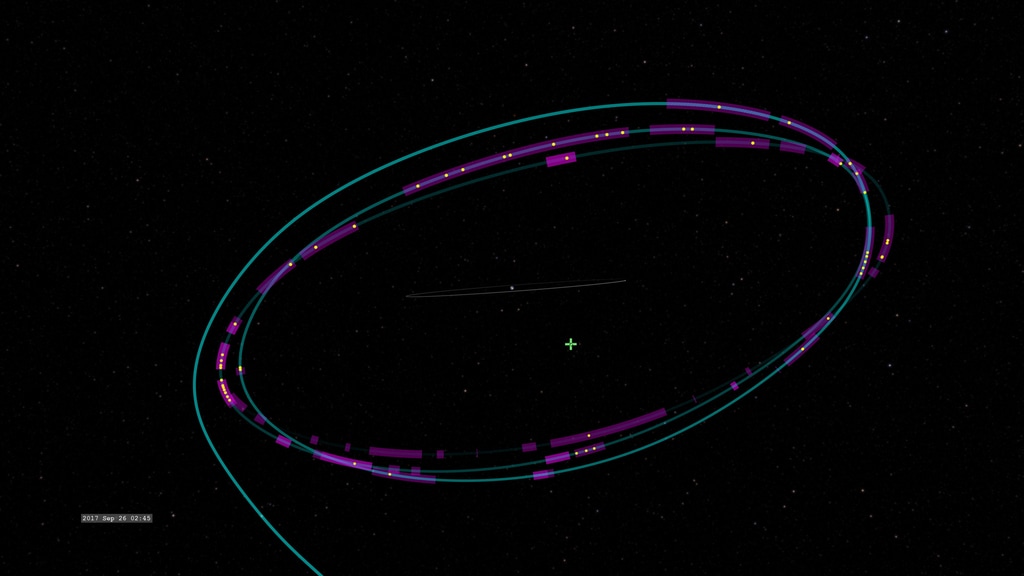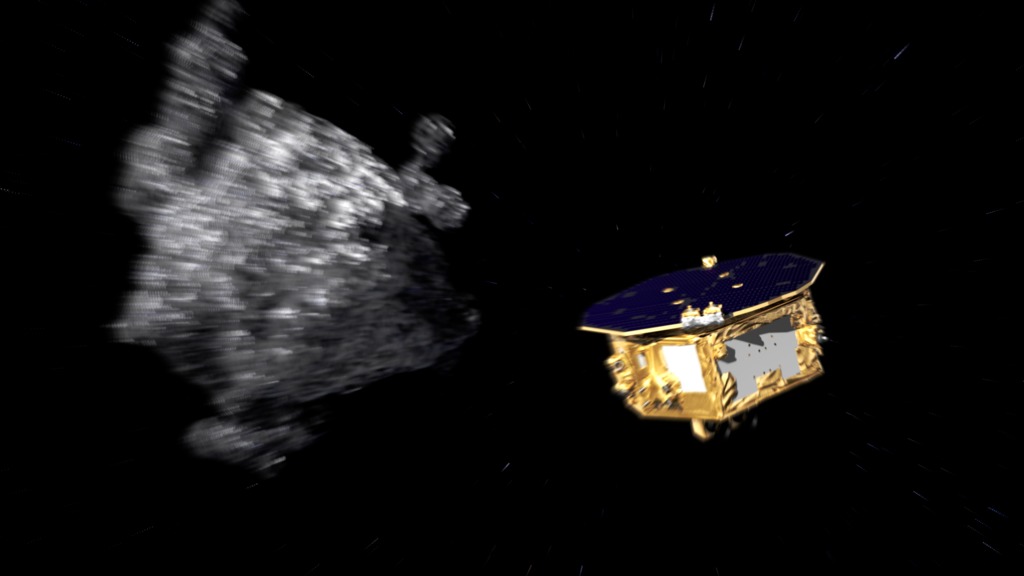LISA Pathfinder Spaceflight Experiment a Rousing Success
The LISA Pathfinder mission is an ESA-led effort to demonstrate technologies for a future gravitational wave observatory in space. NASA Goddard astrophysicist Ira Thorpe, a member of the team, discusses the mission and its spectacular results so far.
Credit: NASA's Goddard Space Flight Center
Watch this video on the NASA Goddard YouTube channel.
Complete transcript available.
LISA Pathfinder, a mission led by the European Space Agency (ESA) with contributions from NASA, has successfully tested a key technology needed to build a space-based observatory for detecting gravitational waves. These tiny ripples in the fabric of space, predicted by Albert Einstein a century ago, were first seen last year by the ground-based Laser Interferometer Gravitational-Wave Observatory (LIGO).
Seismic, thermal, and other noise sources limit LIGO to higher-frequency gravitational waves around 100 cycles per second (hertz). But finding signals from more exotic events, such as mergers of supermassive black holes in colliding galaxies, requires the ability to see frequencies at 1 hertz or less, a sensitivity level only possible from space.
A space-based observatory would work by tracking test masses that move only under the influence of gravity. Each spacecraft would gently fly around its test masses without disturbing them, a process called drag-free flight. The primary goal of ESA's LISA Pathfinder mission is to test current technology by flying around an identical pair of 1.8-inch (46 millimeter) cubes made of a gold-platinum alloy, a material chosen for its high density and insensitivity to magnetic fields.
Scientists say the results are nothing short of astonishing. Non-gravitational forces on the cubes were reduced to levels far below the project's original requirements and approach the level of control needed for a full-scale observatory.
The test masses are housed in an experiment called the LISA Technology Package (LTP), which was built by a consortium of European national space agencies and ESA. The LTP uses a high-resolution laser interferometer to determine the positions of the test masses and relays the information to the spacecraft's Drag-Free and Attitude Control System, which then applies minute bursts from microthrusters. In this way, the spacecraft flies in formation with the cubes and isolates them from external forces. The results show that LISA Pathfinder reduced non-gravitational forces on the test masses to a level about 10,000 times smaller than drag-free control technologies used on previous science missions.
LISA Pathfinder also carries a NASA experiment called the ST-7 Disturbance Reduction System. Managed by NASA's Jet Propulsion Laboratory (JPL) in Pasadena, California, the experiment combines novel "electrospray" thrusters with drag-free control software provided by Goddard on a dedicated computer. The experiment, which will use information on the position of the test masses provided by the LTP to determine how to move the spacecraft, is expected to begin science operations in early July.
LISA Pathfinder was launched on Dec. 3, 2015, and began orbiting a point called Earth-sun L1, roughly 930,000 miles (1.5 million kilometers) from Earth in the sun's direction, in late January 2016. LISA stands for Laser Interferometer Space Antenna, a space-based gravitational wave observatory concept that has been studied in great detail by both NASA and ESA.

This plot shows the result of LISA Pathfinder's two-month experiment in drag-free flight, where the goal is to follow test masses as they fall through space affected only by gravity. LISA Pathfinder reduced non-gravitational forces on the test masses to a level five times better than the mission required and within 25 percent of the requirement for a future space-based gravitational wave detector. The cause of the spike around 0.07 hertz is still under investigation. The line labeled "noise model" represents a simple physical model of the measured performance. It consists of a flat component, dominant at low frequencies, arising from residual gas molecules around the test mass and a rising component, dominant at higher frequencies, representing the limits of the instrument's ability to sense the motion of the test masses. This model explains the vast majority of the observed behavior, providing confidence that such models can be used to extrapolate from LISA Pathfinder to a full-scale future observatory.
Credit: NASA's Goddard Space Flight Center

An artist's rendering of LISA Pathfinder on its way to Earth-sun L1.
Credit: ESA/C. Carreau
For More Information
Credits
Please give credit for this item to:
NASA's Goddard Space Flight Center. However, individual items should be credited as indicated above.
-
Producer
- Scott Wiessinger (USRA)
-
Technical support
- Aaron E. Lepsch (ADNET Systems, Inc.)
-
Science writer
- Francis Reddy (Syneren Technologies)
-
Scientist
- James Ira Thorpe (NASA/GSFC)
-
Interviewee
- James Ira Thorpe (NASA/GSFC)
-
Editor
- Scott Wiessinger (USRA)
-
Animator
- Scott Wiessinger (USRA)
Release date
This page was originally published on Tuesday, June 7, 2016.
This page was last updated on Wednesday, May 3, 2023 at 1:48 PM EDT.

